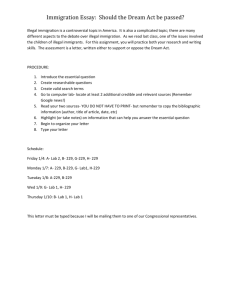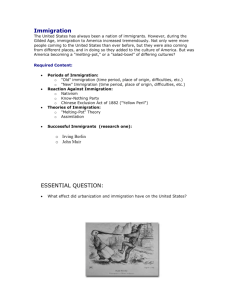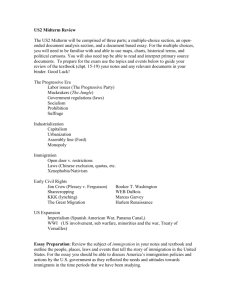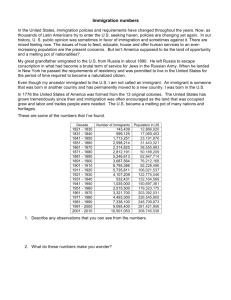MATH LESSON
advertisement
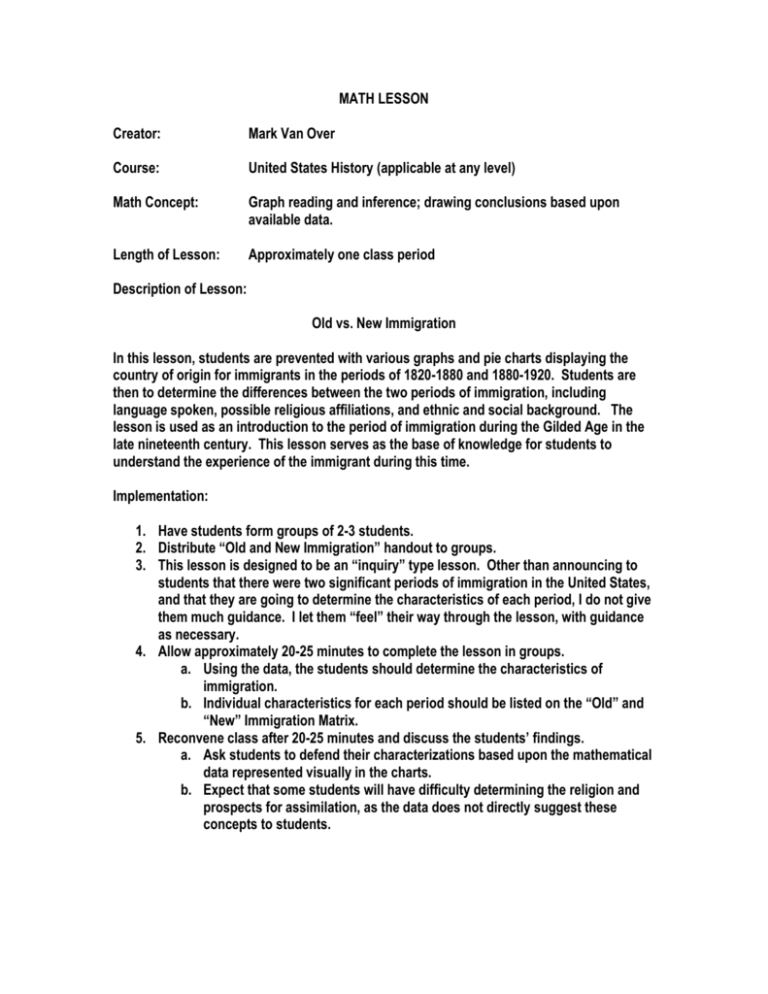
MATH LESSON Creator: Mark Van Over Course: United States History (applicable at any level) Math Concept: Graph reading and inference; drawing conclusions based upon available data. Length of Lesson: Approximately one class period Description of Lesson: Old vs. New Immigration In this lesson, students are prevented with various graphs and pie charts displaying the country of origin for immigrants in the periods of 1820-1880 and 1880-1920. Students are then to determine the differences between the two periods of immigration, including language spoken, possible religious affiliations, and ethnic and social background. The lesson is used as an introduction to the period of immigration during the Gilded Age in the late nineteenth century. This lesson serves as the base of knowledge for students to understand the experience of the immigrant during this time. Implementation: 1. Have students form groups of 2-3 students. 2. Distribute “Old and New Immigration” handout to groups. 3. This lesson is designed to be an “inquiry” type lesson. Other than announcing to students that there were two significant periods of immigration in the United States, and that they are going to determine the characteristics of each period, I do not give them much guidance. I let them “feel” their way through the lesson, with guidance as necessary. 4. Allow approximately 20-25 minutes to complete the lesson in groups. a. Using the data, the students should determine the characteristics of immigration. b. Individual characteristics for each period should be listed on the “Old” and “New” Immigration Matrix. 5. Reconvene class after 20-25 minutes and discuss the students’ findings. a. Ask students to defend their characterizations based upon the mathematical data represented visually in the charts. b. Expect that some students will have difficulty determining the religion and prospects for assimilation, as the data does not directly suggest these concepts to students.






